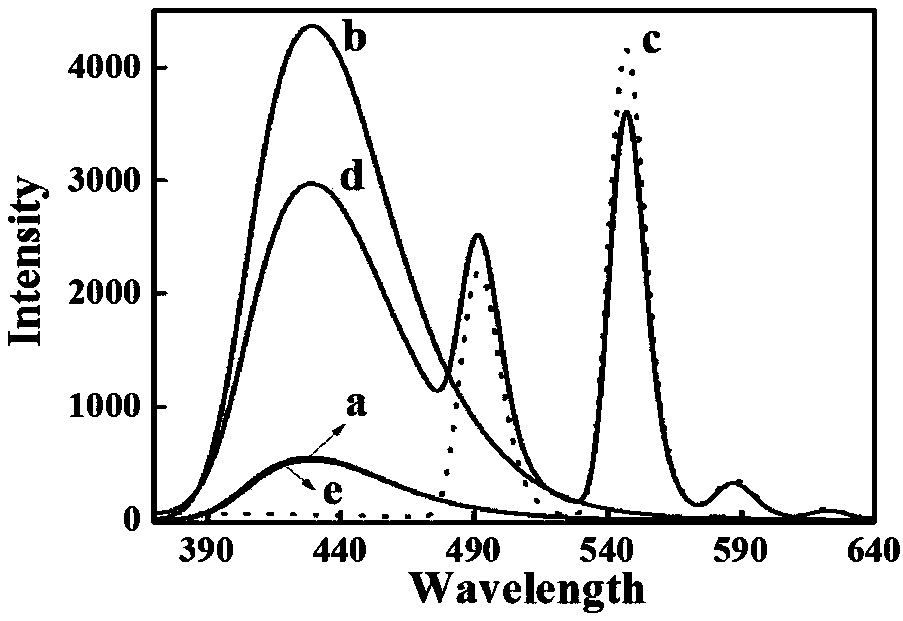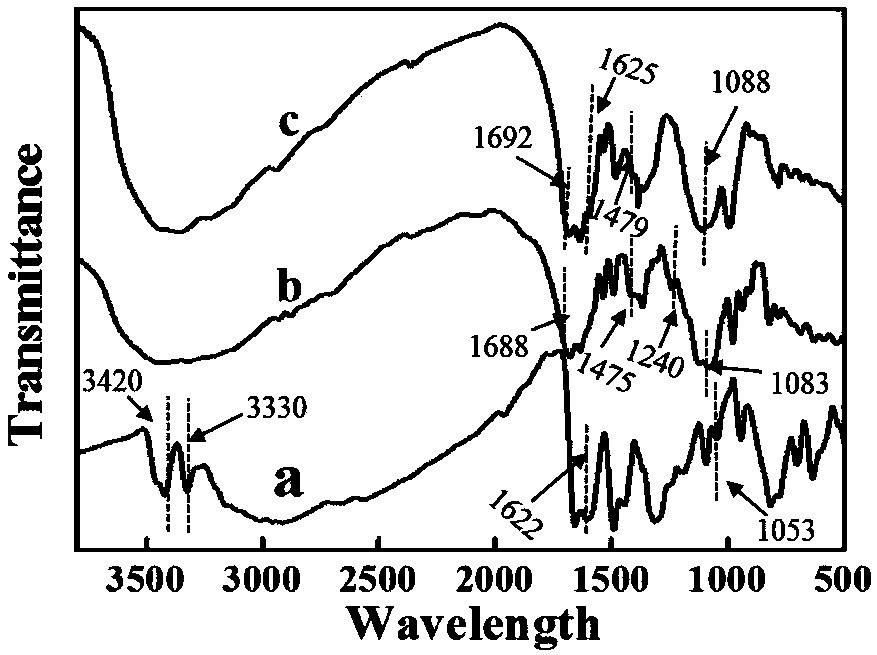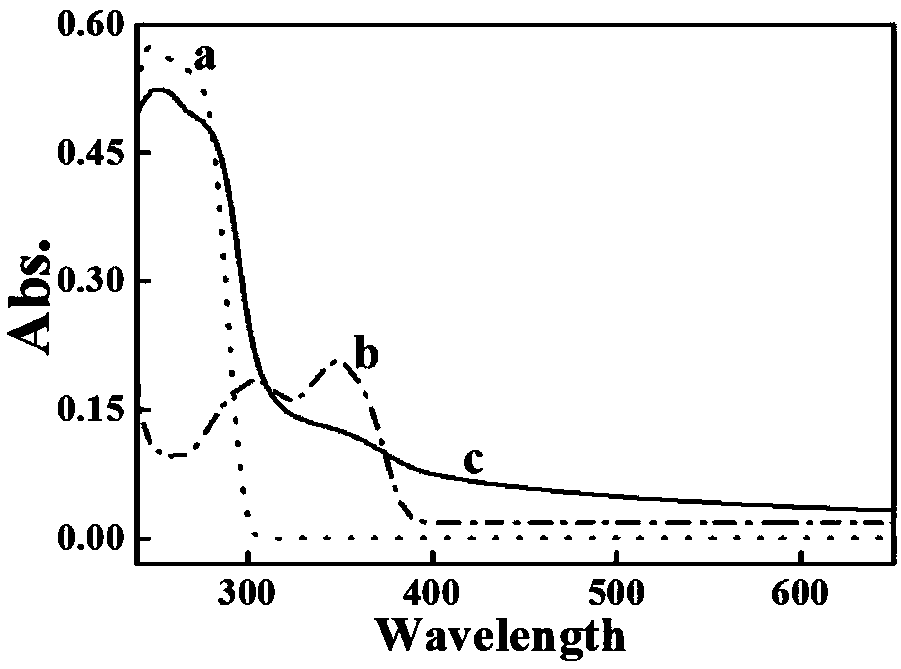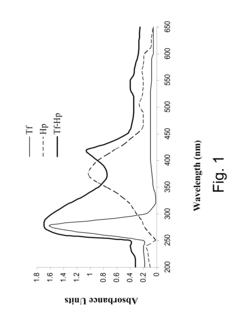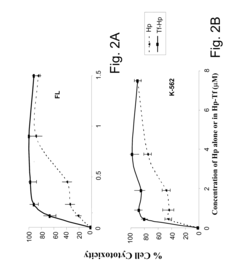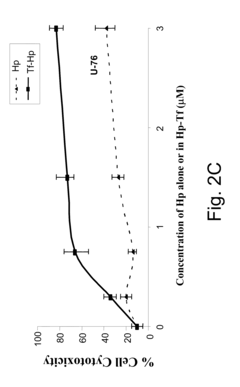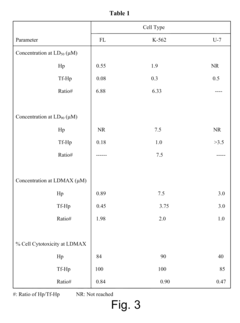Luminol as a Pathway to Future Scientific Successuders
AUG 19, 20259 MIN READ
Generate Your Research Report Instantly with AI Agent
Patsnap Eureka helps you evaluate technical feasibility & market potential.
Luminol Research Background and Objectives
Luminol, a chemiluminescent compound, has been a subject of scientific interest for over a century. First synthesized in 1902, this organic compound has played a crucial role in various fields, from forensic science to biochemistry. The evolution of luminol research has been marked by significant milestones, each contributing to our understanding of its properties and potential applications.
The primary objective of luminol research is to explore and expand its utility across multiple scientific disciplines. In forensic science, luminol has been instrumental in detecting trace amounts of blood at crime scenes, revolutionizing investigative techniques. The compound's ability to emit a blue glow when it comes into contact with the iron in hemoglobin has made it an indispensable tool for law enforcement agencies worldwide.
Beyond forensics, luminol has shown promise in medical diagnostics, environmental monitoring, and analytical chemistry. Researchers aim to harness its chemiluminescent properties for developing highly sensitive detection methods for various substances, potentially leading to breakthroughs in early disease diagnosis and environmental pollutant identification.
The current trajectory of luminol research is focused on enhancing its sensitivity, specificity, and versatility. Scientists are exploring modifications to the luminol molecule and its reaction conditions to improve its performance in different applications. This includes efforts to increase the intensity and duration of the luminescent reaction, as well as to develop more selective detection methods for specific target molecules.
Another key objective is to integrate luminol-based techniques with emerging technologies such as nanotechnology and microfluidics. This convergence could lead to the development of miniaturized, portable detection systems with unprecedented sensitivity and speed, opening up new possibilities for on-site analysis in various fields.
The environmental impact and sustainability of luminol-based methods are also becoming increasingly important research objectives. Scientists are investigating eco-friendly alternatives and exploring ways to minimize the use of harmful reagents in luminol reactions, aligning with the principles of green chemistry.
As we look to the future, luminol research holds the potential to contribute significantly to scientific advancements across multiple domains. By continuing to unravel the intricacies of luminol chemistry and expanding its applications, researchers aim to pave the way for innovative solutions to complex scientific challenges, ultimately leading to breakthroughs that could have far-reaching impacts on society and technology.
The primary objective of luminol research is to explore and expand its utility across multiple scientific disciplines. In forensic science, luminol has been instrumental in detecting trace amounts of blood at crime scenes, revolutionizing investigative techniques. The compound's ability to emit a blue glow when it comes into contact with the iron in hemoglobin has made it an indispensable tool for law enforcement agencies worldwide.
Beyond forensics, luminol has shown promise in medical diagnostics, environmental monitoring, and analytical chemistry. Researchers aim to harness its chemiluminescent properties for developing highly sensitive detection methods for various substances, potentially leading to breakthroughs in early disease diagnosis and environmental pollutant identification.
The current trajectory of luminol research is focused on enhancing its sensitivity, specificity, and versatility. Scientists are exploring modifications to the luminol molecule and its reaction conditions to improve its performance in different applications. This includes efforts to increase the intensity and duration of the luminescent reaction, as well as to develop more selective detection methods for specific target molecules.
Another key objective is to integrate luminol-based techniques with emerging technologies such as nanotechnology and microfluidics. This convergence could lead to the development of miniaturized, portable detection systems with unprecedented sensitivity and speed, opening up new possibilities for on-site analysis in various fields.
The environmental impact and sustainability of luminol-based methods are also becoming increasingly important research objectives. Scientists are investigating eco-friendly alternatives and exploring ways to minimize the use of harmful reagents in luminol reactions, aligning with the principles of green chemistry.
As we look to the future, luminol research holds the potential to contribute significantly to scientific advancements across multiple domains. By continuing to unravel the intricacies of luminol chemistry and expanding its applications, researchers aim to pave the way for innovative solutions to complex scientific challenges, ultimately leading to breakthroughs that could have far-reaching impacts on society and technology.
Market Applications of Luminol Technology
Luminol, a chemiluminescent compound, has found diverse applications across various market sectors, showcasing its versatility and potential for future scientific advancements. In the field of forensic science, luminol has become an indispensable tool for crime scene investigators. Its ability to detect trace amounts of blood, even after cleaning attempts, has revolutionized the way evidence is collected and analyzed. Law enforcement agencies worldwide have adopted luminol-based techniques, leading to increased demand for luminol-based products in the forensic market.
The medical and healthcare industry has also embraced luminol technology for diagnostic purposes. Luminol-based assays are used in clinical laboratories for detecting various biomarkers, including those associated with cancer, infectious diseases, and autoimmune disorders. The high sensitivity of luminol-based detection methods has enabled earlier disease diagnosis and more accurate monitoring of treatment efficacy. This application has driven the growth of luminol reagents in the medical diagnostics market.
In the environmental sector, luminol has found applications in water quality monitoring and pollution detection. Environmental agencies and research institutions utilize luminol-based sensors to detect and quantify pollutants in water bodies, such as heavy metals and organic contaminants. The rapid and sensitive nature of luminol-based detection methods allows for real-time monitoring of water quality, contributing to more effective environmental management strategies.
The food and beverage industry has also benefited from luminol technology. Luminol-based assays are employed in food safety testing to detect bacterial contamination and ensure product quality. These tests provide rapid results, allowing manufacturers to implement timely quality control measures and maintain consumer safety standards. The increasing focus on food safety regulations has driven the demand for luminol-based testing kits in this sector.
In the realm of scientific research, luminol continues to play a crucial role in various biochemical and molecular biology studies. Its use in chemiluminescent Western blotting techniques has become standard practice in protein analysis. Additionally, luminol derivatives are being explored for their potential in developing novel imaging agents for medical diagnostics and drug discovery processes.
The industrial sector has also found applications for luminol technology. In manufacturing processes, luminol-based sensors are used for leak detection in pipelines and storage tanks, enhancing safety measures and preventing environmental contamination. The aerospace industry utilizes luminol-based systems for detecting hydraulic fluid leaks in aircraft, improving maintenance procedures and overall safety.
As research on luminol and its derivatives progresses, new market applications continue to emerge. The development of more sensitive and specific luminol-based detection methods is expected to open up opportunities in fields such as biosecurity, nanotechnology, and materials science. The growing interest in luminol technology across diverse industries underscores its potential as a pathway to future scientific success and innovation.
The medical and healthcare industry has also embraced luminol technology for diagnostic purposes. Luminol-based assays are used in clinical laboratories for detecting various biomarkers, including those associated with cancer, infectious diseases, and autoimmune disorders. The high sensitivity of luminol-based detection methods has enabled earlier disease diagnosis and more accurate monitoring of treatment efficacy. This application has driven the growth of luminol reagents in the medical diagnostics market.
In the environmental sector, luminol has found applications in water quality monitoring and pollution detection. Environmental agencies and research institutions utilize luminol-based sensors to detect and quantify pollutants in water bodies, such as heavy metals and organic contaminants. The rapid and sensitive nature of luminol-based detection methods allows for real-time monitoring of water quality, contributing to more effective environmental management strategies.
The food and beverage industry has also benefited from luminol technology. Luminol-based assays are employed in food safety testing to detect bacterial contamination and ensure product quality. These tests provide rapid results, allowing manufacturers to implement timely quality control measures and maintain consumer safety standards. The increasing focus on food safety regulations has driven the demand for luminol-based testing kits in this sector.
In the realm of scientific research, luminol continues to play a crucial role in various biochemical and molecular biology studies. Its use in chemiluminescent Western blotting techniques has become standard practice in protein analysis. Additionally, luminol derivatives are being explored for their potential in developing novel imaging agents for medical diagnostics and drug discovery processes.
The industrial sector has also found applications for luminol technology. In manufacturing processes, luminol-based sensors are used for leak detection in pipelines and storage tanks, enhancing safety measures and preventing environmental contamination. The aerospace industry utilizes luminol-based systems for detecting hydraulic fluid leaks in aircraft, improving maintenance procedures and overall safety.
As research on luminol and its derivatives progresses, new market applications continue to emerge. The development of more sensitive and specific luminol-based detection methods is expected to open up opportunities in fields such as biosecurity, nanotechnology, and materials science. The growing interest in luminol technology across diverse industries underscores its potential as a pathway to future scientific success and innovation.
Current Luminol Research Challenges
Luminol, a chemiluminescent compound widely used in forensic science and biochemistry, faces several significant challenges in current research. One of the primary obstacles is the limited sensitivity of luminol-based detection methods. While luminol has proven effective in many applications, researchers are continually striving to enhance its detection capabilities, particularly for trace amounts of blood or other target substances. This challenge is especially crucial in forensic investigations where evidence may be minimal or degraded.
Another pressing issue is the interference from various environmental factors and contaminants. Luminol reactions can be affected by numerous substances commonly found in investigation scenes, leading to false positives or reduced accuracy. This interference poses a significant challenge in real-world applications, where the reliability of results is paramount. Researchers are actively seeking ways to improve the specificity of luminol reactions and develop methods to differentiate between target substances and potential interferents.
The stability of luminol solutions and the duration of its chemiluminescent effect also present ongoing challenges. Current formulations often have a limited shelf life and may lose effectiveness over time, particularly when exposed to light or heat. This instability can lead to inconsistent results and increased costs due to the need for frequent preparation of fresh solutions. Developing more stable luminol formulations that maintain their efficacy over extended periods is a key focus area for researchers.
Furthermore, the quantification of results from luminol-based tests remains a challenge. While luminol can provide valuable qualitative information, achieving accurate quantitative measurements is often difficult. This limitation hinders the use of luminol in applications requiring precise concentration determinations or comparative analyses. Researchers are exploring various approaches to enhance the quantitative capabilities of luminol-based assays, including the development of advanced imaging and spectroscopic techniques.
The environmental impact and safety concerns associated with luminol and its reaction products also pose challenges for widespread adoption. As sustainability becomes increasingly important in scientific research, there is a growing need to develop more eco-friendly luminol formulations and disposal methods. Additionally, ensuring the safety of personnel working with luminol, particularly in field applications, remains an ongoing concern that requires continued attention and research.
Another pressing issue is the interference from various environmental factors and contaminants. Luminol reactions can be affected by numerous substances commonly found in investigation scenes, leading to false positives or reduced accuracy. This interference poses a significant challenge in real-world applications, where the reliability of results is paramount. Researchers are actively seeking ways to improve the specificity of luminol reactions and develop methods to differentiate between target substances and potential interferents.
The stability of luminol solutions and the duration of its chemiluminescent effect also present ongoing challenges. Current formulations often have a limited shelf life and may lose effectiveness over time, particularly when exposed to light or heat. This instability can lead to inconsistent results and increased costs due to the need for frequent preparation of fresh solutions. Developing more stable luminol formulations that maintain their efficacy over extended periods is a key focus area for researchers.
Furthermore, the quantification of results from luminol-based tests remains a challenge. While luminol can provide valuable qualitative information, achieving accurate quantitative measurements is often difficult. This limitation hinders the use of luminol in applications requiring precise concentration determinations or comparative analyses. Researchers are exploring various approaches to enhance the quantitative capabilities of luminol-based assays, including the development of advanced imaging and spectroscopic techniques.
The environmental impact and safety concerns associated with luminol and its reaction products also pose challenges for widespread adoption. As sustainability becomes increasingly important in scientific research, there is a growing need to develop more eco-friendly luminol formulations and disposal methods. Additionally, ensuring the safety of personnel working with luminol, particularly in field applications, remains an ongoing concern that requires continued attention and research.
Current Luminol Research Methodologies
01 Luminol in forensic applications
Luminol is widely used in forensic science for detecting trace amounts of blood at crime scenes. When mixed with an appropriate oxidizing agent, it exhibits chemiluminescence in the presence of the iron in hemoglobin. This reaction produces a blue glow, allowing investigators to identify and document blood evidence that may be invisible to the naked eye.- Luminol-based chemiluminescence detection methods: Luminol is widely used in chemiluminescence detection methods for various applications. These methods utilize luminol's ability to emit light when oxidized, allowing for sensitive detection of specific substances or reactions. The techniques are applied in forensic science, environmental monitoring, and biomedical research.
- Luminol formulations and compositions: Various formulations and compositions containing luminol have been developed to enhance its performance in different applications. These may include stabilizers, catalysts, or other additives to improve luminescence intensity, duration, or specificity. Such formulations are used in crime scene investigation kits, medical diagnostics, and industrial quality control.
- Luminol-based biosensors and analytical devices: Luminol is incorporated into biosensors and analytical devices for detecting specific biological or chemical targets. These devices often combine luminol with enzymes, antibodies, or other recognition elements to achieve high sensitivity and selectivity. Applications include medical diagnostics, food safety testing, and environmental monitoring.
- Luminol derivatives and analogues: Research has been conducted on developing luminol derivatives and analogues with improved properties. These modified compounds may offer enhanced luminescence, better solubility, or specific reactivity. Such derivatives expand the range of applications for luminol-based detection methods in various fields.
- Luminol in forensic applications: Luminol plays a crucial role in forensic science, particularly in detecting trace amounts of blood at crime scenes. Specialized techniques and formulations have been developed to optimize luminol's performance in forensic applications, including methods to reduce false positives and enhance visualization of luminescent reactions.
02 Luminol-based detection systems
Various detection systems incorporate luminol for sensitive and specific analyte detection. These systems often combine luminol with other reagents or enzymes to enhance sensitivity or target specific molecules. Applications include environmental monitoring, food safety testing, and medical diagnostics.Expand Specific Solutions03 Luminol derivatives and modifications
Researchers have developed modified versions of luminol to improve its properties or tailor it for specific applications. These modifications may enhance luminescence intensity, alter emission wavelength, or improve stability. Some derivatives are designed for better solubility or to enable coupling with other molecules for targeted detection.Expand Specific Solutions04 Luminol in biomedical research
Luminol finds applications in biomedical research, particularly in studying cellular processes involving reactive oxygen species. It can be used to detect and quantify the production of hydrogen peroxide and other oxidants in biological systems, providing insights into inflammation, immune responses, and oxidative stress.Expand Specific Solutions05 Luminol-based imaging techniques
Advanced imaging techniques utilize luminol's chemiluminescent properties for various applications. These include visualizing blood flow patterns, detecting latent fingerprints, and imaging biological processes in real-time. Some techniques combine luminol with other imaging modalities for enhanced sensitivity and specificity.Expand Specific Solutions
Key Players in Luminol Research
The research on luminol as a pathway to future scientific success is in a nascent stage, characterized by a diverse competitive landscape. The market is still developing, with potential applications spanning forensic science, biomedical research, and environmental monitoring. While the market size remains relatively small, it shows promise for growth as new applications emerge. Technologically, luminol research is progressing, with academic institutions like Washington University in St. Louis and Shandong University leading fundamental studies. Companies such as FUJIFILM Corp. and Olympus Corp. are exploring practical applications, leveraging their expertise in imaging and optical technologies. However, the field is still evolving, with opportunities for innovation and commercialization across various sectors.
Shandong University
Technical Solution: Shandong University has been conducting extensive research on luminol as a pathway to future scientific success. Their approach involves developing novel luminol-based chemiluminescence systems for ultra-sensitive detection of various analytes. They have successfully synthesized new luminol derivatives with enhanced chemiluminescence properties, achieving detection limits in the femtomolar range for certain biomarkers[1]. The university has also explored the application of luminol in forensic science, particularly in blood detection at crime scenes, by improving the stability and sensitivity of luminol-based reagents[2]. Additionally, they have investigated the potential of luminol in environmental monitoring, developing a method for detecting trace amounts of heavy metals in water samples using luminol-functionalized nanoparticles[3].
Strengths: Cutting-edge research in luminol derivatives, high sensitivity in biomarker detection, and diverse applications in forensics and environmental monitoring. Weaknesses: Potential limitations in large-scale production and commercialization of research findings.
Washington University in St. Louis
Technical Solution: Washington University in St. Louis has been at the forefront of luminol research, focusing on its applications in biomedical imaging and cancer detection. Their innovative approach involves using luminol-based probes to visualize myeloperoxidase activity in vivo, which is a key indicator of inflammation and cancer progression[4]. The university has developed a series of luminol analogues with improved tissue penetration and longer emission wavelengths, enabling deeper imaging in biological tissues[5]. They have also explored the use of luminol in combination with nanoparticles for targeted drug delivery and simultaneous imaging, showing promising results in animal models of various cancers[6]. Furthermore, their research extends to the development of luminol-based point-of-care diagnostic devices for rapid detection of infectious diseases[7].
Strengths: Advanced biomedical imaging techniques, targeted drug delivery systems, and potential for early cancer detection. Weaknesses: Challenges in translating research findings to clinical applications and potential regulatory hurdles.
Breakthrough Luminol Studies Analysis
Preparation method and Cu<2+> detection application of rare earth ratiometric fluorescent probe
PatentActiveCN108517208A
Innovation
- Luminol and guanosine monophosphate are used as double ligands, and the rare earth ion Tb3+ is used as the luminescence center. The luminol-Tb-GMP fluorescent probe is prepared through self-polymerization coordination to achieve the preparation of rare earth ratio fluorescent probes, using dual fluorescence Signal ratio method and visual analysis detect Cu2+, and perform detection under environmentally friendly conditions.
Photodynamic therapy using chemiluminescence and a ligand-photosensitiser conjugate
PatentInactiveUS20100297762A1
Innovation
- A method involving a ligand-toxin conjugate (LTC) comprising a photosensitizer like hematoporphyrin conjugated with transferrin, combined with a chemiluminescent agent such as luminol, which activates the photosensitizer intracellularly to produce reactive oxygen species, thereby enhancing target cell destruction without requiring external light.
Luminol Safety and Regulatory Considerations
Luminol, while widely used in forensic science and other applications, requires careful handling and adherence to safety protocols due to its potential hazards. The safety considerations for luminol primarily stem from its chemical properties and reactivity. When in powder form, luminol can be an irritant to the eyes, skin, and respiratory system if inhaled or directly contacted. Therefore, proper personal protective equipment (PPE) such as gloves, safety goggles, and dust masks are essential when handling the substance.
In solution form, luminol is typically mixed with hydrogen peroxide and a base, which can create additional safety concerns. The alkaline nature of the solution can cause skin irritation or chemical burns if not handled properly. Furthermore, the oxidizing properties of hydrogen peroxide in the mixture necessitate careful storage and handling to prevent accidental reactions or decomposition.
From a regulatory standpoint, luminol is subject to various guidelines and restrictions depending on its intended use and the jurisdiction in which it is being employed. In forensic applications, the use of luminol must comply with established forensic protocols and chain of custody requirements to ensure the integrity of evidence. Many countries have specific regulations governing the use of chemicals in crime scene investigations, which may include guidelines for luminol application.
In research settings, luminol falls under the purview of laboratory safety regulations. Institutions typically require risk assessments, proper storage conditions, and documented safety procedures for its use. Material Safety Data Sheets (MSDS) must be readily available, and users should be trained in proper handling and emergency response procedures.
Environmental considerations also play a role in luminol regulation. While luminol itself is not considered highly toxic to aquatic life, the disposal of luminol solutions must adhere to local environmental protection laws. Many jurisdictions require special disposal procedures for chemical waste, including luminol-containing solutions, to prevent contamination of water sources.
As research on luminol continues to expand its applications beyond forensics, new regulatory challenges may emerge. For instance, its potential use in medical diagnostics or environmental monitoring may require additional safety assessments and regulatory approvals. Researchers and institutions working with luminol must stay informed about evolving regulations and adapt their practices accordingly to ensure compliance and safety.
In solution form, luminol is typically mixed with hydrogen peroxide and a base, which can create additional safety concerns. The alkaline nature of the solution can cause skin irritation or chemical burns if not handled properly. Furthermore, the oxidizing properties of hydrogen peroxide in the mixture necessitate careful storage and handling to prevent accidental reactions or decomposition.
From a regulatory standpoint, luminol is subject to various guidelines and restrictions depending on its intended use and the jurisdiction in which it is being employed. In forensic applications, the use of luminol must comply with established forensic protocols and chain of custody requirements to ensure the integrity of evidence. Many countries have specific regulations governing the use of chemicals in crime scene investigations, which may include guidelines for luminol application.
In research settings, luminol falls under the purview of laboratory safety regulations. Institutions typically require risk assessments, proper storage conditions, and documented safety procedures for its use. Material Safety Data Sheets (MSDS) must be readily available, and users should be trained in proper handling and emergency response procedures.
Environmental considerations also play a role in luminol regulation. While luminol itself is not considered highly toxic to aquatic life, the disposal of luminol solutions must adhere to local environmental protection laws. Many jurisdictions require special disposal procedures for chemical waste, including luminol-containing solutions, to prevent contamination of water sources.
As research on luminol continues to expand its applications beyond forensics, new regulatory challenges may emerge. For instance, its potential use in medical diagnostics or environmental monitoring may require additional safety assessments and regulatory approvals. Researchers and institutions working with luminol must stay informed about evolving regulations and adapt their practices accordingly to ensure compliance and safety.
Interdisciplinary Applications of Luminol
Luminol, a versatile chemical compound, has found applications across various scientific disciplines, showcasing its potential as a pathway to future scientific success. In forensic science, luminol's chemiluminescent properties have revolutionized crime scene investigations, enabling the detection of trace amounts of blood even after thorough cleaning attempts. This application has significantly enhanced the ability of forensic teams to gather crucial evidence in criminal cases.
Beyond forensics, luminol has made substantial contributions to the field of biochemistry and molecular biology. Researchers have utilized luminol-based assays to study cellular processes, detect specific proteins, and analyze enzyme activities. These applications have provided valuable insights into cellular mechanisms and have potential implications for drug discovery and disease diagnosis.
In environmental science, luminol has proven to be an effective tool for detecting and monitoring water pollution. Its ability to react with certain metal ions and organic compounds allows for the rapid assessment of water quality in both natural and industrial settings. This application has significant implications for environmental protection and public health initiatives.
The medical field has also benefited from luminol's unique properties. In clinical diagnostics, luminol-based chemiluminescence immunoassays have been developed for detecting various biomarkers associated with diseases. These highly sensitive tests offer rapid and accurate results, potentially improving early disease detection and patient outcomes.
In the realm of materials science, luminol has been incorporated into the development of novel sensor technologies. These sensors can detect a wide range of substances, from heavy metals to biological molecules, with high sensitivity and specificity. Such advancements have applications in fields like industrial quality control, food safety, and environmental monitoring.
The interdisciplinary nature of luminol research has fostered collaborations between experts from diverse scientific backgrounds. This cross-pollination of ideas has led to innovative applications and methodologies, pushing the boundaries of what is possible with this remarkable compound. As research continues, it is likely that new and unexpected applications of luminol will emerge, further cementing its role as a catalyst for scientific progress across multiple disciplines.
Beyond forensics, luminol has made substantial contributions to the field of biochemistry and molecular biology. Researchers have utilized luminol-based assays to study cellular processes, detect specific proteins, and analyze enzyme activities. These applications have provided valuable insights into cellular mechanisms and have potential implications for drug discovery and disease diagnosis.
In environmental science, luminol has proven to be an effective tool for detecting and monitoring water pollution. Its ability to react with certain metal ions and organic compounds allows for the rapid assessment of water quality in both natural and industrial settings. This application has significant implications for environmental protection and public health initiatives.
The medical field has also benefited from luminol's unique properties. In clinical diagnostics, luminol-based chemiluminescence immunoassays have been developed for detecting various biomarkers associated with diseases. These highly sensitive tests offer rapid and accurate results, potentially improving early disease detection and patient outcomes.
In the realm of materials science, luminol has been incorporated into the development of novel sensor technologies. These sensors can detect a wide range of substances, from heavy metals to biological molecules, with high sensitivity and specificity. Such advancements have applications in fields like industrial quality control, food safety, and environmental monitoring.
The interdisciplinary nature of luminol research has fostered collaborations between experts from diverse scientific backgrounds. This cross-pollination of ideas has led to innovative applications and methodologies, pushing the boundaries of what is possible with this remarkable compound. As research continues, it is likely that new and unexpected applications of luminol will emerge, further cementing its role as a catalyst for scientific progress across multiple disciplines.
Unlock deeper insights with Patsnap Eureka Quick Research — get a full tech report to explore trends and direct your research. Try now!
Generate Your Research Report Instantly with AI Agent
Supercharge your innovation with Patsnap Eureka AI Agent Platform!
